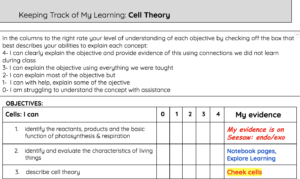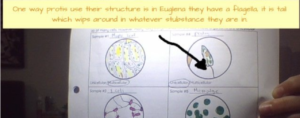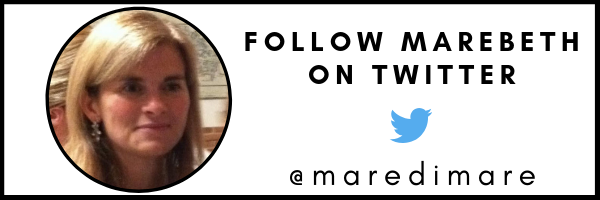In This Post
- Learning targets provide the itinerary and should guarantee access for all
- On any journey participants need to know “where they are going, why they are going there, how they will get there, and when they will arrive…students need the answers to those same four questions to take part in their educational journey!
- Technology is the mapping tool guiding the way so all learners can arrive at their destination
A Journey’s Beginning:
I love all that back to school offers, namely a chance at new beginnings, but more importantly, I relish the time alone in my classroom to reflect on what worked and what did not during the prior school year. Today was my day of reflection. If I recall correctly, it was the end of period three, I quickly flew through the classroom collecting three or four abandoned papers tossed aside once again as my students quickly shuttled off to their next destination.
Right then and there I recognized that something had to change. I needed to provide a map to illuminate the path of learning so students wanted to extend each discovery, not just “be done with it.” I wasn’t asking for much, I just wanted my students to fully take part in their educational journey.
As I ponder this year’s journey, I realize I am off to a decent start, but more unpacking is in my future, as I rearrange stops along my destination and set sail in September. Click To TweetWhat would my students need to launch their journey?
I questioned myself, “would you look forward to embarking on a journey despite having no idea where you were going? why you were going there? or how you would get there? never mind, not knowing when the trip would be over?”
Of course not. But that was exactly what many of my students experienced each day. How could I prepare students for this journey? What would they need to document and share in order to fully take part in each experience?
Where are we headed? The need for understanding learning targets.
I am sure I am not the first teacher to feel disheartened each time work is abandoned on the classroom floor, but I frequently wondered, “ why am I able to engage some, but not all? Why would my students toil on tasks, yet not feel they were worthy of keeping?”
So began my journey to illuminate the trajectory of student learning in my classroom.
First, I realized it is one thing to post and read through learning targets, but I needed to assist my students as they deciphered each learning target in order to steer their learning in the right direction. I wanted my students to be convinced of their value and purpose so I began reading each target aloud daily and having my students repeat them. Students then discussed with their tablemates anything they could relate to the target and the ways they might get to the learning targets destination.
The learning targets could change from day to day, or week to week, depending on the tasks that students were completing so I decided to provide each target that needed to be mastered in a table.
Students could then check off when they completed tasks relating to that target. Students would have the choice of three to four station activities to develop their evidence of mastery.
All learning targets should build upon each other as students progress through the activities focused on content knowledge. I used Webb’s Depth of Knowledge in unison with our learning standards to guide my choice of classroom tasks.
As students progressed in mastering each target I also built in frequent teacher check-ins to develop independence while allowing my students to see that I was invested in their journey. Students began to use their voice by sharing ideas, assisting others and designing proof of mastery tasks. Students were more thoughtful when choosing various tasks and moved on only when they had confidence that they had mastered each target. I began to see true engagement and thankfully, found less and less papers abandoned on my classroom floor!

Why are we heading there? Keeping the end in mind.
Once they mastered the targets, students would need to process, “Why are we heading there?” I made sure the itinerary began with the end in mind, and that each task provided rigor as students moved up Webb’s Depth of Knowledge. I quickly discovered that students worked harder when the tasks were challenging and when they knew they had the tools and assistance to master them.
I made sure the journey wasn’t overbooked with frivolous tasks, but provided them with the bare bones they needed to access the knowledge and skills they required at each level in order to move on to the next task. Students dove into daily tasks because they had a choice in how they would provide evidence of their mastery. I clearly laid out what the performance task would be at the end of the unit.
Sharing the performance task before the journey commenced provided students with the understanding of the knowledge and skills they would need to complete the task. Performance tasks provide further evidence of learning because they allow for the application and transfer of knowledge developed as learning progresses.
Students are more engaged during performance tasks because they are open-ended, thus allowing for personalization while providing rigor through synthesis of several learning. Performance tasks are a perfect ending because they are,why they are taking part in this journey.
[scroll down to keep reading]
What will get them there? Technology provides personalization through voice and choice.
How will students get there? What tools will they need to map the journey? Showing mastery of each learning target was the most manageable part of the journey, thanks to Seesaw. I feel lucky to be the tour guide at a time when teaching allows for so many choices and directions for my students to pursue.
For our “evidence of learning” journey I chose the learning platform Seesaw. The varied tools it provides fosters student voice, builds collaboration and allows for choice when providing evidence of learning. Seesaw instills engagement in each task by empowering students to make choices and to become self directed learners. My students provided evidence of learning each target by sharing a model, a photo, a movie, a voice thread, a sketch, or a graphic uploaded to Seesaw. As students made connections to the learning target by completing rigorous classroom tasks and choosing the evidence they would share to show mastery developed student accountability and autonomy.
When will they get there?
Students arrived at their journey when they were ready to share mastery of each target and when they could transfer their understanding of each target into their performance task. Students at this point had completed all daily instructional activities, uploaded their evidence of learning each target and were able to share their performance based assessment. A performance based assessment is the perfect way to keep students engaged throughout the journey, keep them on task and requires organization.
Engagement is high because students understand that each step of the journey is needed to complete the ending task. Sharing student outcomes ensures that all aspects of learning are transparent: the curriculum requirements, the various forms of instruction, assessments, and assignment of grades.

As I ponder this year’s journey, I realize I am off to a decent start, but more unpacking is in my future, as I rearrange stops along my destination and set sail in September.
About Marebeth DiMare
I have been a middle school Science teacher for 22 years. I am the middle school curriculim leader for my school and I was an adjunct Science educator in the Education Department for Lesley University. I have also been a presentor at MAST(Massachusetts Association of Science Teachers) conferences. I also have also taught 6th grade English. I love to integrate technology in my lessons. I am a Flipgrid, Seesaw and Peardeck certified teacher. I will be taking part in Evaluating Curricular Materials in Science Network hosted by NextGen Time and the Massachusetts DESE.



